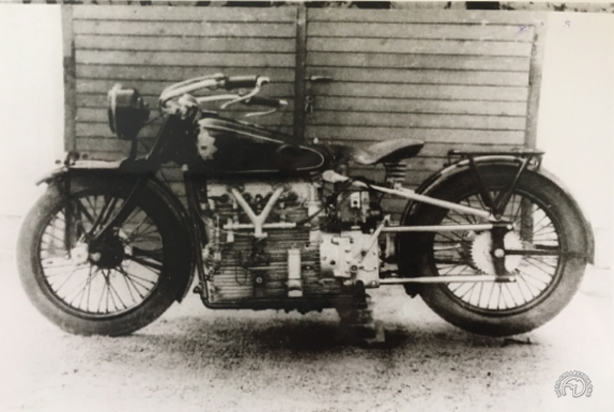This entry is also available in: Russian Chinese (Traditional)
A small company, created by Hans Windhoff in 1907, was engaged in the production of car radiators, but he was also fascinated by motorcycle production that was really popular at the time. In 1925, he introduced a two-stroke 125cc water-cooled motorcycle, and later released a 500cc version, but the real success was brought to him by the machine presented in 1927.
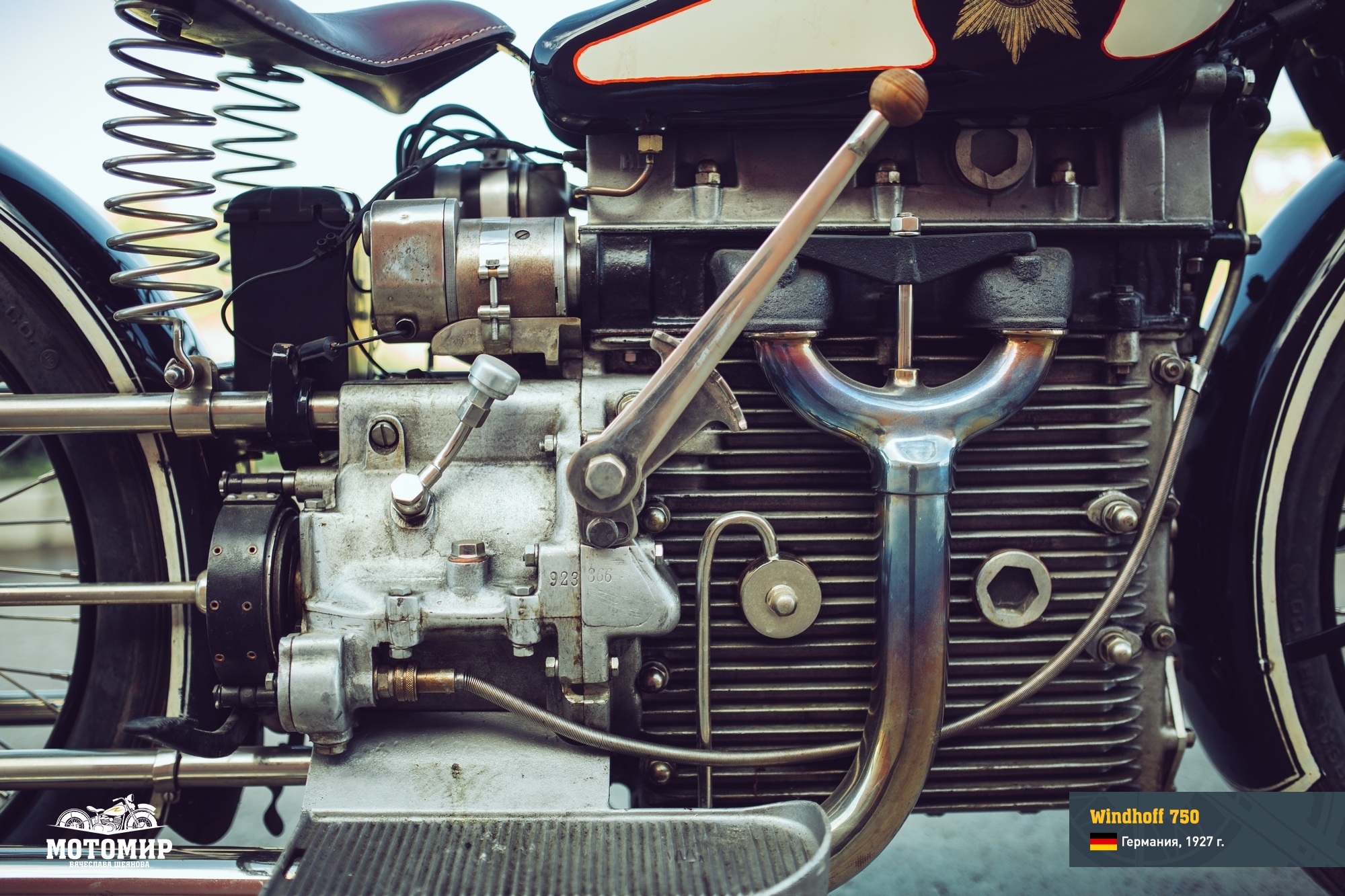
It was the time when Hans Windhoff, with the help of the talented Josef Dauben, built a motorcycle with an in-line longitudinal four-cylinder ohv engine, that looks interesting even today. Josef worked at the Delta motorcycle factory before he met Windhoff. In 1923, in Berlin, he launched the production of an adapted copy of the Indian Scout, under Mabeco name. He also had success in the automotive world: he was engaged in the development of an 8-cylinder engine at HG Röhr, and, in 1952, he was engaged in the design of the Mercedes Benz W194, and later the famous 300 SL model.
In the history of Germany, Windhoff became the first 4-cylinder motorcycle and remained the only one in Europe during the crisis of 1927-1930.
Three versions were issued, which differed with timing mechanism and small technical improvements.
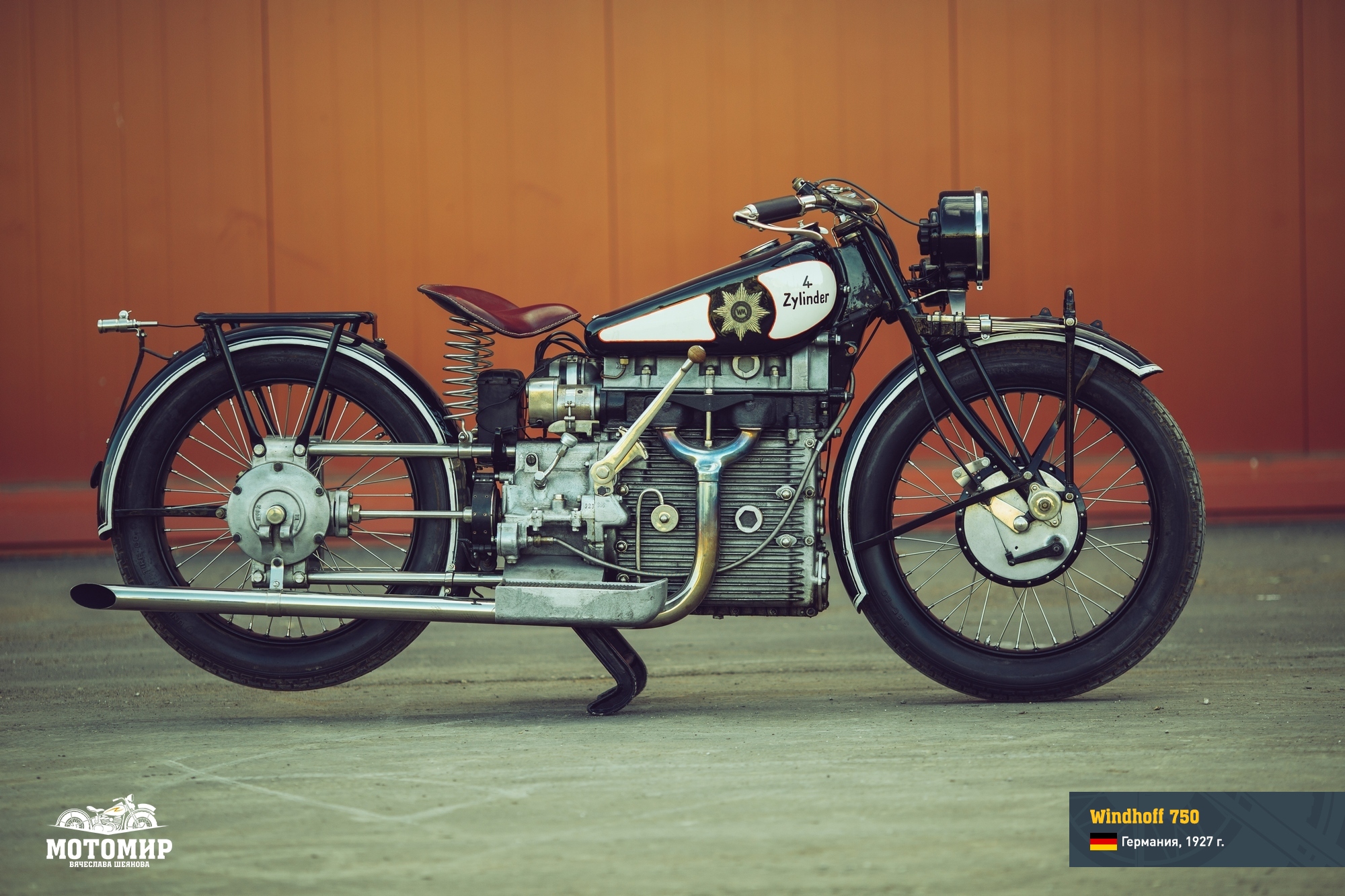
In 1927, the first version got a split triangular tank and could hold 12 liters of fuel. The console-suspended saddle was supported by the leaf springs. The diameter of the front drum brake was 170 mm.
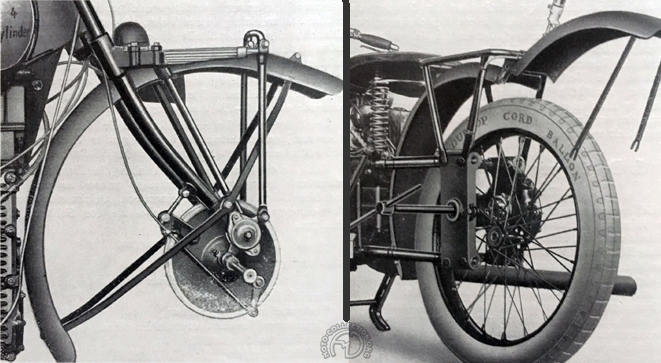
The second version, presented at the museum “Motorworld by V. Sheyanov”, appeared in 1928, with a 14-liter tank of a more rounded shape and a front brake drum with a diameter of 220 mm.
The third version differed only by electrical equipment.
Unfortunately, the 4-cylinder Windhoff, like many other bikes, fell victim to the crisis of 1929 and was produced for only 40 months. It is known for certain that about 1,450 motorcycles were produced in the period between 1927 and 1931, but today there are only 20 copies in the world.
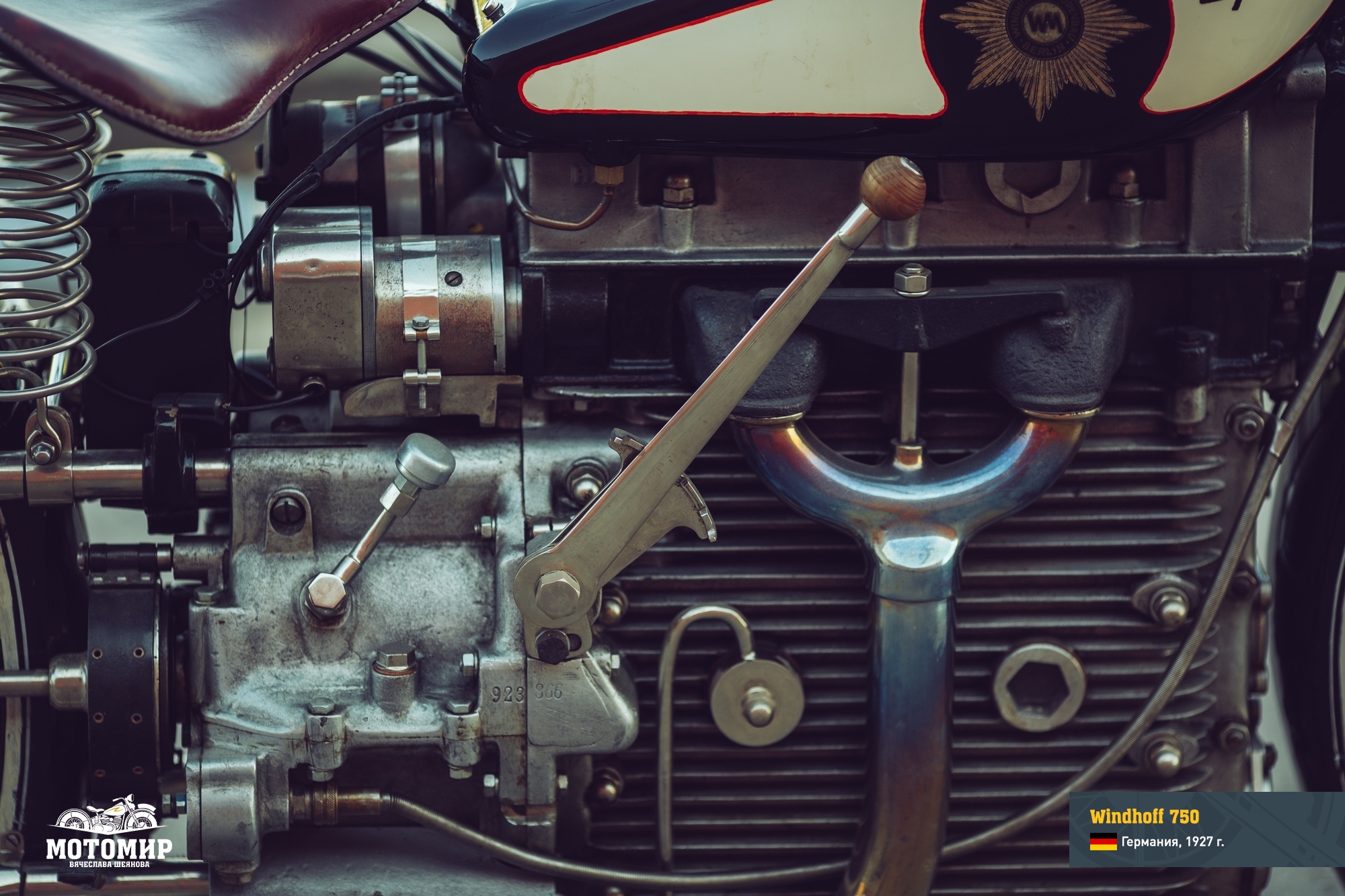
The 70-kg aluminum block with a capacity of 750cc and a short-stroke (63 x 60 mm) looked very unusual, and the power of 22 hp at 4000 rpm was quite impressive for that time.
The leading role in the whole design was played by the oil pump since the engine of the Windhoff was oil-cooled. Oil, which was pumped under pressure through the all loaded parts of the motor (6.5L), settled on the walls with developed external finning. From there the oil was getting back into the crankcase, already cooled, so that there was no need for an oil radiator.
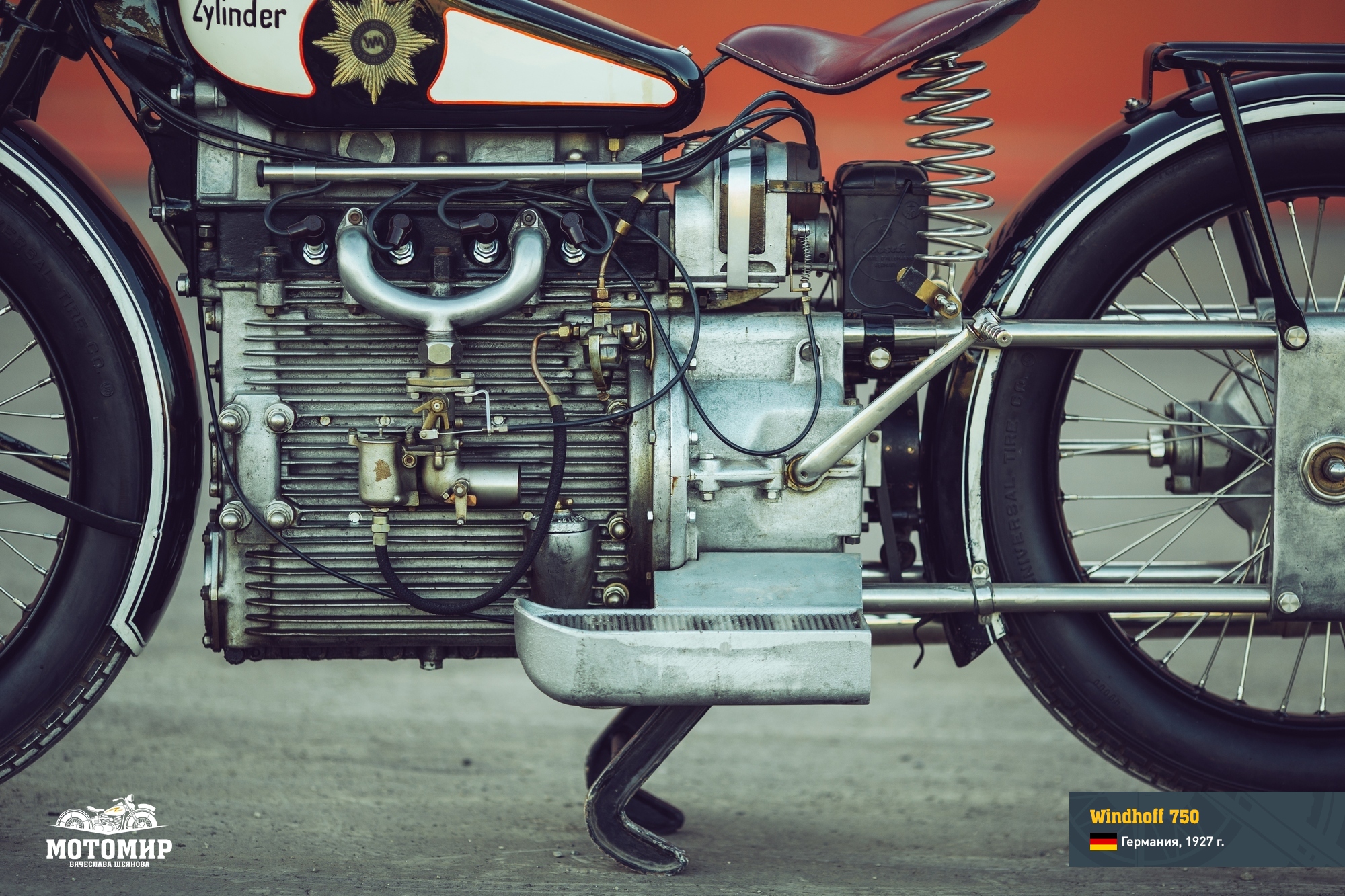
The aluminum block housed a three-tailed crankshaft and replaceable cylinder liners. The aluminum head of the block contained eight vertically arranged valves, they were affected by the camshaft that was placed directly above them. The original version was made with short rocker arms, but later it changed. The camshaft and the oil pump in the crankcase of the engine were driven by six gears from the crankshaft at the front of the engine (alternately made of steel and composite material (resin fiber) to reduce noise).
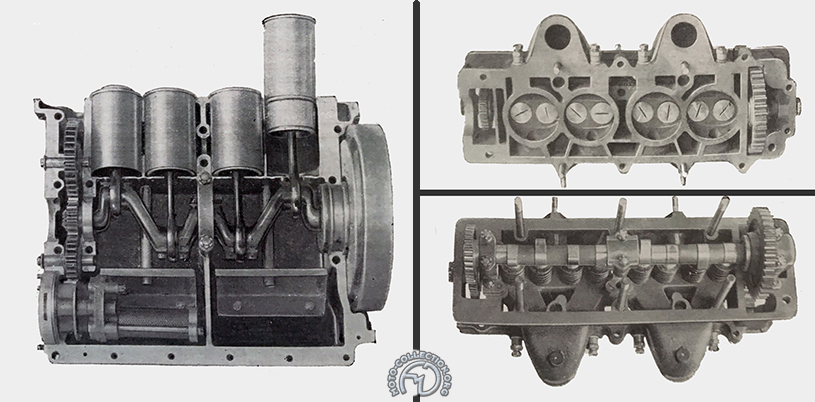
A small Zenith carburetor (ø 22mm) was responsible for the delivery of the air-fuel mixture.
A three-speed gearbox with manual shifting, a multi-disc clutch, a kick-starter, and a transmission brake operating from the foot pedal was attached directly to the engine.

The entire power unit was the basis of the chassis: a forged frame with a steering column was put on on top of the cylinder head, and horizontal pipes were coming out of the gearbox case from behind, between which located the carter of cardan main gear (or more like torsion, since the rear suspension was rigid and cardan joints were not used).
The Windhoff motorcycle had a short front fork of a rather complex design, and two short quarter-elliptical springs were used as elastic elements. The speedometer was located on top of the gas tank. The four-cylinder Windhoff weighed 185 kg and developed a speed of up to 120 km/h.

BMW R47 displayed at the Motorcycle Museum “Motorworld by V. Sheyanov”
The Windhoff became the most powerful motorcycle of the 1927 season, its competitors were the Victoria 600 KR6 and BMW R47. Windhoff motorcycles also differed in cost, depending on the complexity of production: starting from 1,750 DM in addition to another 400 DM for electrical equipment. For comparison, the 25 hp BMW R63, released in 1928, cost 2,100 DM. Only 1929 BMW R16 with a new stamped frame overtook Windhoff at a cost of 2,200 DM.
In the UK, Windhoff cost 97 pounds and 18 shillings against 170 pounds for the Brough Superior SS100, but it cost unambiguously more than the most expensive A.J.S., which cost 73 pounds. When comparing cost, Windhoff lost even to American Henderson KJ, which cost 118 pounds but was also brought from the other end of the world.
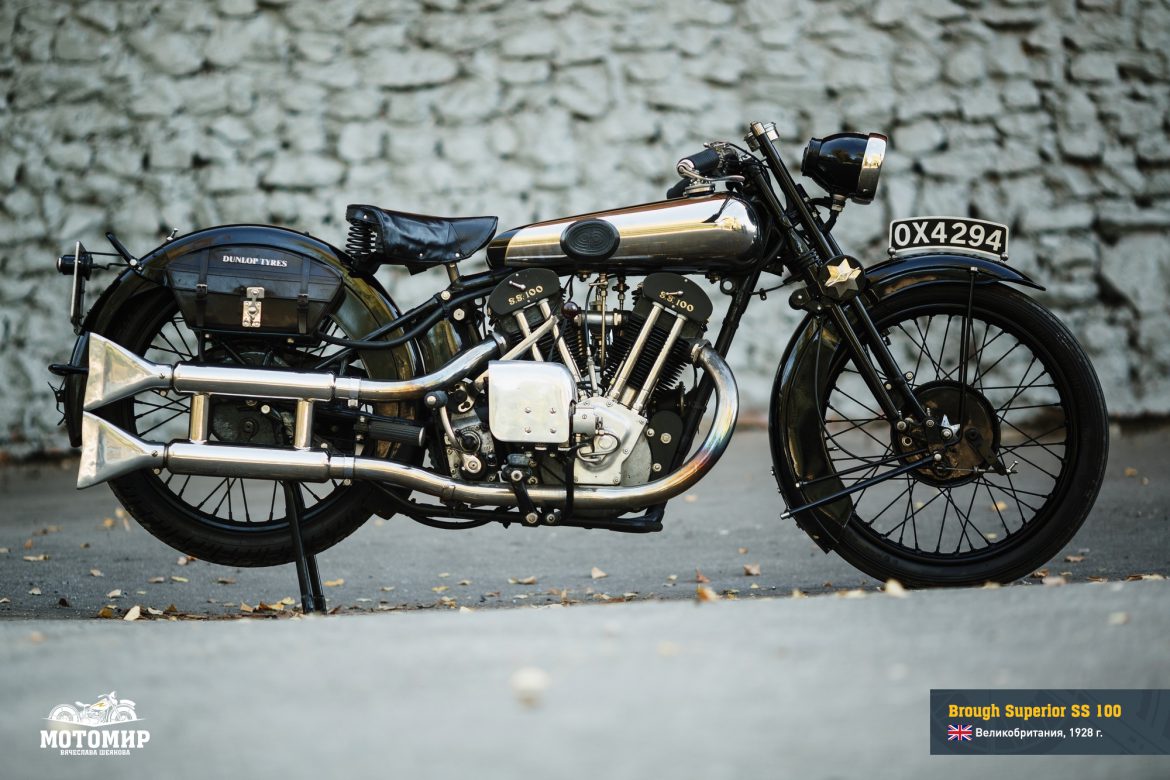
1928, Brough Superior SS100 displayed at the Motorcycle Museum “Motorworld by V. Sheyanov”
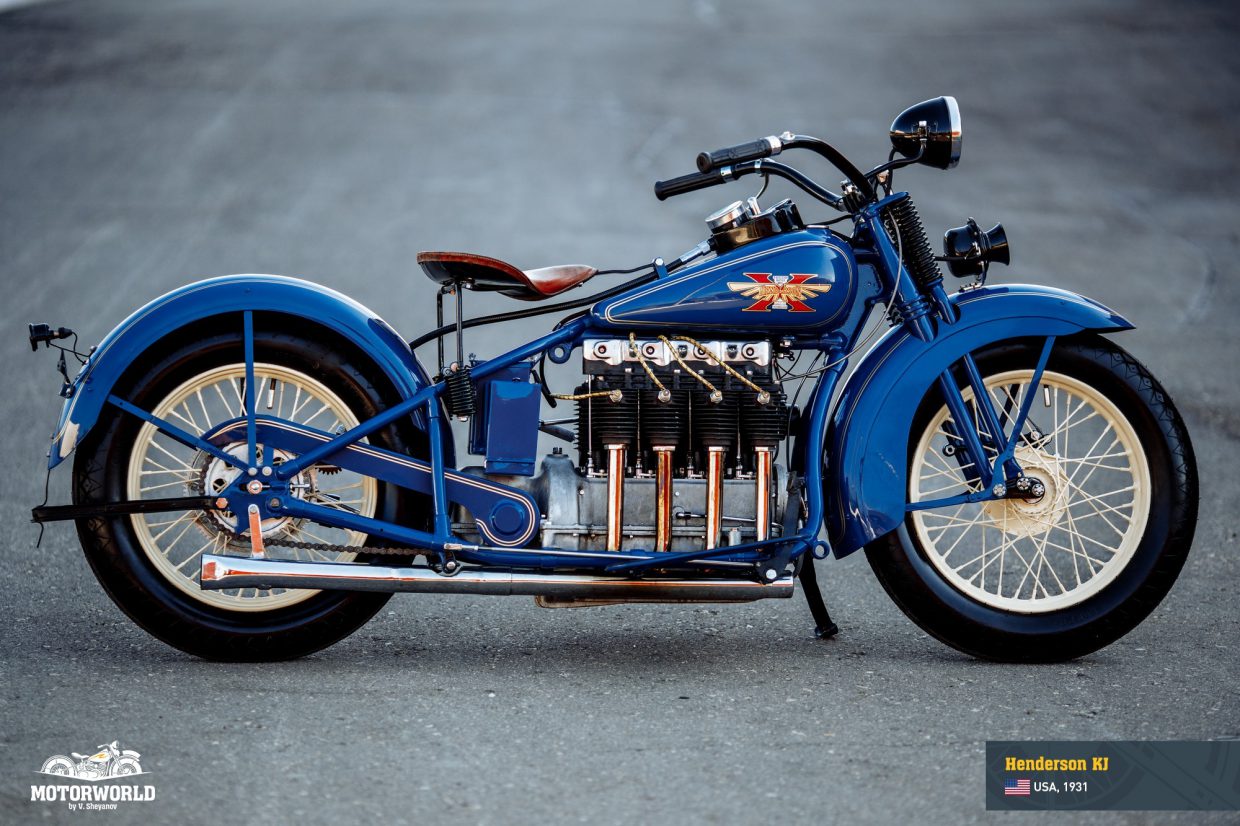
1931, Henderson KJ displayed at the Motorcycle Museum “Motorworld by V. Sheyanov”
So it turned out that these motorcycles did not have commercial success, but had a stable demand from connoisseurs of good quality machines. By the way, in 1929, Hans released a standard 1000cc flat engine, and two years later, in 1931, he created two prototypes of a 1000cc ohv motorcycle very similar to Windhoff 750, but this is a completely different story…
The history of the motorcycle from the Motorworld collection began in Germany. The earliest owner we know about is Mr. Wick from Berlin. In the 1980s, Mr. Wick sold this Windhoff to Austrian, Johann Schwarzenberger. The motorcycle required restoration, which Schwarzenberger carried out for 5 years. The engine of the motorcycle was restored by the Klinger Motor Repair Company (Fa. Klingler Motoreninstandsetzung) from Innsbruck, Austria. In 1992, when the motorcycle was finally ready, the paperwork was done and the bike received Austrian documents. In 2003, Schwarzenberg sold the motorcycle to a collector from Bavaria, Josef Beil. In 2011, the motorcycle was sold again and ended up in the collection of the German classic motorcycle specialist, Hubert Fehrenbach. Finally, in 2013, the Windhoff 750 became a part of the ‘Motorworld by V. Sheyanov’ collection.
| Manufacturer | Windhoff Motorenbau GmbH, Berlin (Germany) |
| Years of manufacture | 1927 – 1931 |
| Quantity produced, units | 1 450 |
| Price | 1 750 RМ |
| Today’s value | 5083,34 $ |
| ENGINE AND TRANSMISSION | |
| Type | 4-cylinder, OHC |
| Engine capacity, cc | 748 |
| Bore and stroke, mm | 63 х 60 |
| Engine rating | 22 h.p. at 4000 rpm |
| Sparking | magneto |
| Carburetor | Zenith 22K4 |
| Battery | 6 V |
| Clutch | |
| Transmission | 3-speed |
| FRAME AND WHEELBASE | |
| Frame type | Engine makes up the frame |
| Front suspension | Quarter-elliptic spring |
| Rear suspension | Rigid |
| Brakes | Manual, drum-type, at the front wheel |
| Wheel size | 3,85 х 20 |
| DIMENSIONS | |
| Length, mm |
2 200*
|
| Width, mm |
800*
|
| Height, mm |
1 070*
|
| Wheelbase, mm |
1 450*
|
| Ground clearance, mm |
140*
|
| Seat height, mm |
780*
|
| Mass, kg |
185
|
| Gas tank size, l |
14
|
| Maximum speed, km/h |
120
|
| Range, km |
|








































